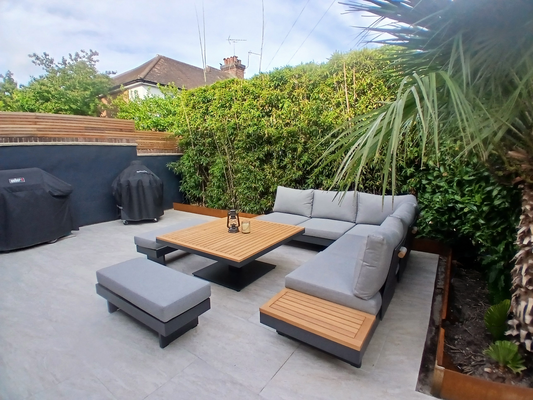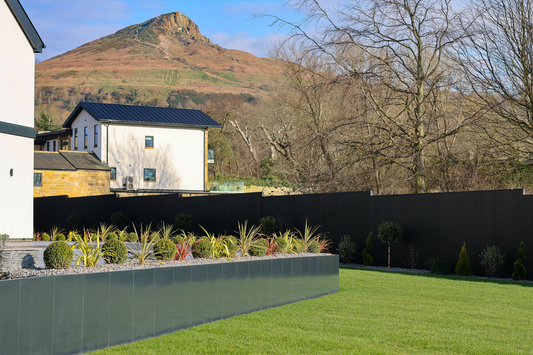
Garden edging is an essential element in creating a landscape that is not only visually stunning but also practical and easy to maintain. It’s the unsung hero of garden design, offering a way to define spaces, manage plant growth, and elevate the overall aesthetic. In this guide, we’ll explore how to choose the right edging, share expert tips for installation, and provide inspiration for making your outdoor space truly unique.
Why Garden Edging is a Game-Changer
Garden edging may seem like a small detail, but it plays a big role in landscaping. Imagine a lawn with neatly defined flower beds or a winding path that seems to flow effortlessly through the garden. That’s the power of good edging—it provides structure, guides the eye, and keeps things tidy.
Here are some key benefits:
Defining Boundaries: Edging separates areas of the garden, like lawns, flower beds, and pathways, for a more organized look.
Keeping Mulch and Soil in Place: It prevents soil erosion and keeps mulch from spilling into unwanted areas.
Easier Maintenance: By creating a barrier, edging helps prevent grass and weeds from encroaching on your beds.
Boosting Curb Appeal: A well-edged garden looks polished and professionally designed.
Types of Garden Edging Materials: What Works Best?
Choosing the right material for your garden edging depends on your aesthetic goals, budget, and the specific needs of your landscape. Here’s a deeper dive into the most popular options:
1. Steel Edging
Steel edging is prized for its durability and sleek, modern look. It’s flexible enough to create curves yet strong enough to hold up over time.
Best Use: Low-profile borders for lawns, paths, and minimalist garden designs.
Example: Groundline Garden Edging is a versatile steel option available in various finishes, perfect for achieving clean, defined edges.
2. Concrete Edging
Concrete offers a permanent and customizable solution. Whether poured in place or pre-formed, it can be shaped to suit any design.
Best Use: Long-term installations in high-traffic areas.
Considerations: Requires professional installation for best results.
3. Timber Sleepers
Timber edging brings a natural, rustic feel to gardens. While it’s affordable and easy to install, it may not last as long as other materials.
Best Use: Informal gardens and vegetable beds.
Tip: Opt for treated wood to extend its lifespan.
4. Plastic Edging
This budget-friendly option is lightweight and easy to install, making it popular for DIYers. However, it may lack the durability and elegance of other materials.
Best Use: Temporary or small-scale projects.
5. Natural Stone
Stone edging adds timeless beauty and blends well with natural landscapes. While labour-intensive, the results are worth it for many homeowners.
Best Use: Decorative borders and traditional gardens.
Tip: Combine stone with steel edging for added stability and a unique look.
Advanced Edging Solutions for the Modern Gardener
For those looking to take their landscaping to the next level, innovative edging systems offer both style and functionality:
Contour Raised Bed System
Raised beds are more than just practical; they’re a design feature in their own right. The Contour Raised Bed System is an innovative solution that allows for heights up to 600mm and accommodates both straight and curved layouts.
Anco Retaining Wall System
For landscapes with slopes or uneven terrain, retaining walls are essential. The Anco Retaining Wall System is a robust steel solution designed for structural integrity up to 1.2 meters tall. It’s perfect for creating terraces or defining multi-level gardens.

Inspiring Garden Edging Ideas
Looking for inspiration? Here are some creative ways to incorporate edging into your garden:
Curving Pathways: Use steel edging to create sinuous paths that draw visitors through your garden.
Contrasting Materials: Pair stone with metal edging for a striking effect.
Layered Beds: Use raised beds to add height and dimension to flat landscapes.
Minimalist Borders: Opt for sleek, low-profile edging for a modern aesthetic.
Conclusion
Garden edging is a simple yet powerful tool for transforming your outdoor space. Whether you’re defining pathways, creating raised beds, or enhancing borders, the right edging can make all the difference. Explore innovative solutions like the Contour Raised Bed System or Groundline Garden Edging to elevate your landscape design.
Ready to get started? Plan your project today and see how garden edging can bring structure, beauty, and functionality to your garden.



